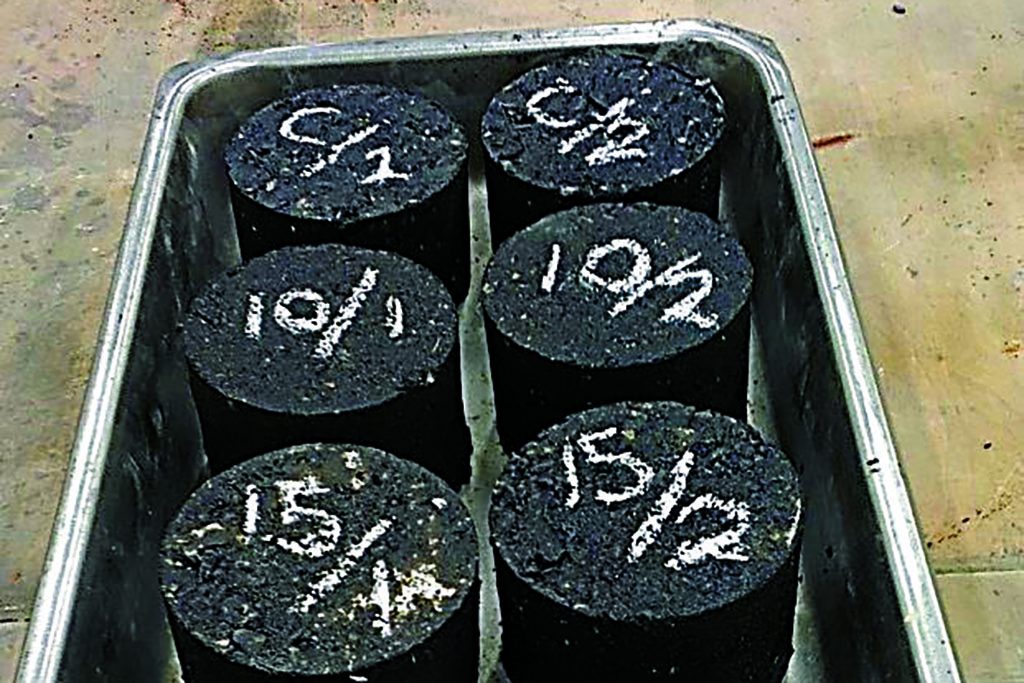Cigarette butts are a pain in the-you-know-where and they’re literally everywhere but an Australian scientist wants to bake them into bricks for construction.
Some 65 per cent of all cigarettes smoked end up ground into the pavement and left there, leaving behind a toxic mess which takes years to break down because they’re mostly plastic and insoluble.
It is estimated that some six trillion cigarettes made each year create 1.2 million tonnes of cigarette butt waste all contaminated with arsenic, chromium, nickel, and cadmium.
In Canada alone, the City of Hamilton reports, some 8,000 tonnes of cigarette butts are discarded annually — about three fully-loaded HMCS Haida warships.
What to do?
Enter Australian professor Abbas Mohajerani, who has a couple of ideas for the construction sector.
Mohajerani is the leading researcher at RMIT, a global university of technology, design and enterprise with three campuses and two sites in Australia, two campuses in Vietnam and a research and industry collaboration centre in Spain.
He found that infusing one per cent of cigarette waste in fired-clay bricks had no impact on the quality of the bricks and saves about nine per cent of the energy required to fire them because the butts are combustible.
Further, more research by his team found that infusing butts into asphalt also sealed in the toxins and did not affect the quality of paving. In fact, it’s already been adopted into some municipal paving standards in Australia.
It doesn’t necessarily add quality or performance to bricks or paving but it does accomplish a major task for municipalities which is to remove and secure the cigarette butts and prevent them despoiling the environment. Getting the industry to take up his research and put it into the field has been frustrating, however, as it is with any new technology introduced to construction.
“Researchers spend years of their lives researching and developing techniques and the manufacturing industries do not respond or try to implement the results rapidly,” Mohajerani says. “It usually takes some years until the industries act significantly.
“I think governments should provide more and significant incentives and encouragements and mandate the recycling of a minimum amount of waste materials by the manufacturing industry in the world.”
Still, he’s hopeful that the demand to clean up and dispose of butts will fire up a mandated solution and it’s already happening.
Make no mistake; butts are a huge problem because they are one of the most littered items in the world.
In Canada, the city of Vancouver estimates one million cigarette butts are discarded daily there. The Great Canadian Shoreline Cleanup initiative found butts top the list of shoreline trash accounting for nearly 50 per cent of the litter collected between 2013 and 2016.
The writing is one the wall for cigarette butts and sending them to landfill isn’t optimal which is why Mohajerani’s work in this area seems promising.
For asphalt, taking into account density, air voids, and voids in mineral aggregates a mix of bitumen with 10 kg/m3 and 15 kg/m3 of cigarette butts encapsulated the toxins and produced pavement able to handle light, medium and heavy traffic conditions.
“Also, the reduction in bulk density of asphalt cement caused by incorporating encapsulated cigarette butts, increases the porosity, particularly when encapsulating in higher grade bitumen, which, in turn, lowers its thermal conductivity,” he reports. “This helps reduce the heat island effect in urban environments.”
For the parallel research into fired-clay bricks, Mohajerani experimented with different levels of cigarette butts in the mix with different mixing times which were compared to regular bricks with zero butt content.
The team also tested for off-gassing during the firing process looking for levels of carbon monoxide, carbon dioxide, chlorine, nitrogen oxide and hydrogen cyanide.
The lowest mix of one per cent was found to be optimal in that it didn’t impact the final product with a compressive strength of 19.53 MPa.
“Bricks were shown to be a viable solution for the disposal of cigarette butts,” he says. “They can reduce contamination caused by cigarette butts and provide a masonry construction material that can be either load-bearing or non-load bearing, depending on the quantity of butts incorporated.”
Mohajerani says the addition of just one per cent of cigarette butts could eliminate the issue of the waste and toxins.
“Theoretically, only 2.5 per cent of the world’s annual brick production is necessary to completely offset the worldwide, annual cigarette production,” he says.
“We need the universal construction materials industry to step up — not just someone — and put the concepts to work on a large scale. I believe that we are all responsible for thinking about and meaningfully and effectively doing whatever we can to urgently restore natural sustainability to the environment.”




The photo mentions wax encapsulation on the cigarette butts in the Asphalt. Could you explain that in more detail? The article tends to imply that the butts are just added in a “natural” state.